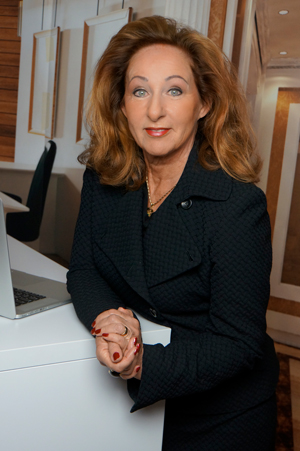Does establishing boundaries seem harsh or restrictive? When handled correctly, it should have the reverse effect, leading to greater freedom. Relationships need to have structure, which shapes purpose and longevity. It all starts by getting to know the other individual and setting up parameters based on both of your needs. From there you can set healthy boundaries.
One of my friends and employees reminds me of the importance of setting personalised boundaries based on relationships all the time. She often says: “Let’s check in, but not too much. I don’t want to be micromanaged.” She wanted to stay connected, but not to an excessive amount unless absolutely necessary. Our relationship is mature because both of us know the expected behaviours.
Of course, I’ve had the opposite experience, too. One team member constantly pushed work on me, and I didn’t know why until she admitted she needed additional training. Her reaction to not having proper skills was to give me her work. By clearing the air, we were able to set up training for her and reestablish healthy boundaries regarding workflow and responsibilities.
Setting Healthy Boundaries
If you feel overwhelmed by the thought of setting boundaries, in either your personal or professional lives, start by applying five strategies:
Take care of you
Establishing boundaries with others is impossible if you have zero sense of work-life balance. That imbalance can lead to burnout. You have to set up boundaries to protect your physical and emotional health.
The easiest way to reverse this unhealthy trend is to schedule uncommitted time into your day. For me, this happens during the early morning. I review my daily to-do list and layout top priorities. Those that aren’t important get rescheduled to a later date.
Don’t allow people to become time stealers
I’ve had clients and team members disrespect my time by showing up late for meetings or not being available when they promised they would be. Rather than get angry, I tighten my boundaries so people have no choice but to respect my time. This involves providing a specific window during which I will make myself available to them. If they choose to contact me outside of that window, I am no longer able to meet or converse.
You might feel awkward setting such clear boundaries at first. However, if you don’t waver, you’ll get results. Verify with the other person that you are allocating a specific timeframe for your meeting and that you will not be able to go past a certain time. If they show up at 3:45 p.m. for a meeting scheduled for 3 to 4 p.m., wrap up promptly at 4 as planned.
Understand other people’s needs
As you set your own boundaries, be respectful of others’. Otherwise, you can ruin relationships. Keep your eyes and ears open for others’ parameters. Listen to their challenges and successes, and give them the respect they’re owed. Incorporate what you learn into the boundaries you develop with them.
Hold your ground
You’ll be asked to compromise your boundaries in the name of negotiation. While negotiation can be the right choice in some situations, it can also be used as a manipulation device so the other person gets what they want at your expense.
An influential client wanted me to add a new target market to my business plan. While they had some excellent points, they lacked a deeper understanding of why the target audience was not justifiable. I held my ground despite their insistence that I make a change based on their suggestions. Even if someone influential advises you, trust your gut and work your plan.
Remain positive when thinking about how to set healthy boundaries
Nothing can derail boundaries faster than abusive internal self-talk. Speak kindly to yourself, and avoid language that cuts away at your stalwartness. When I started my company, I received an amazing amount of negativity everywhere I went. No one was positive. I had to be my motivator rather than rely on anyone else.
If you find yourself in similar circumstances, the greatest thing you can do is get a good night’s sleep. Waking refreshed will give you the energy you need to charge ahead and refrain from falling into an emotionally draining slump. Leave your phone outside the bedroom and refrain from screen time 30 minutes before bed for anxiety reduction and improved well-being.
Instead of continuing to move forward without boundaries, define your relationship borders for smoother, more pleasant travels.
 About the author
About the author
Kelly Hager is the dynamic, visionary CEO of Arras Sisters, an organization dedicated to creating opportunities for women. After a near-death experience, she built a $55 million business and launched a second corporation dedicated to helping others. Kelly is an international speaker, author, and business consultant and has been a contributor to Huffington Post, CBS, NBC, and Fox.
Kelly credits her near-death experience in 2010 with giving her the clarity to enjoy life, family, her profession, and giving back. Her speaking topics include leadership, creating opportunities for women, gender parity in the workplace, team development, overcoming adversity, and building community.








 About the author
About the author